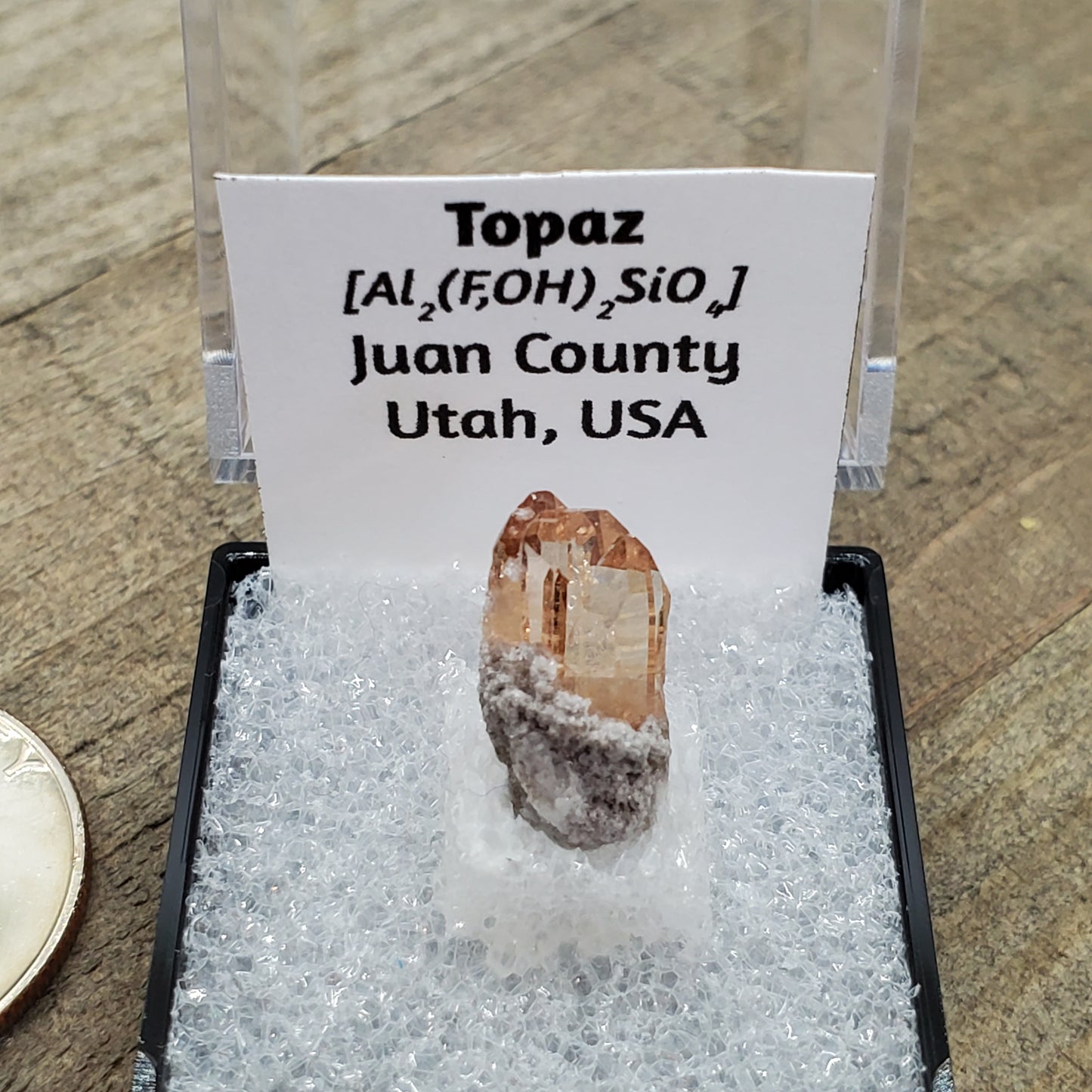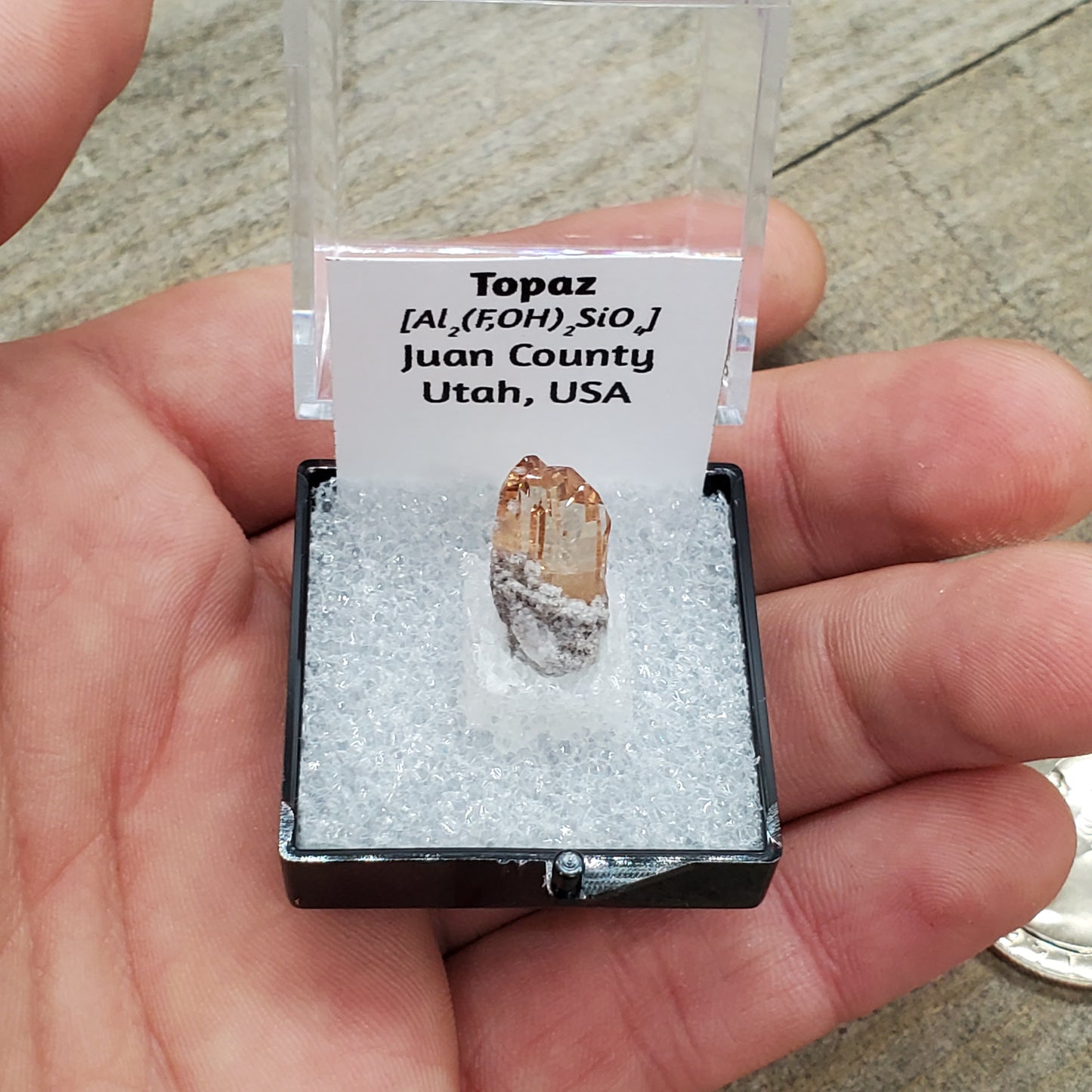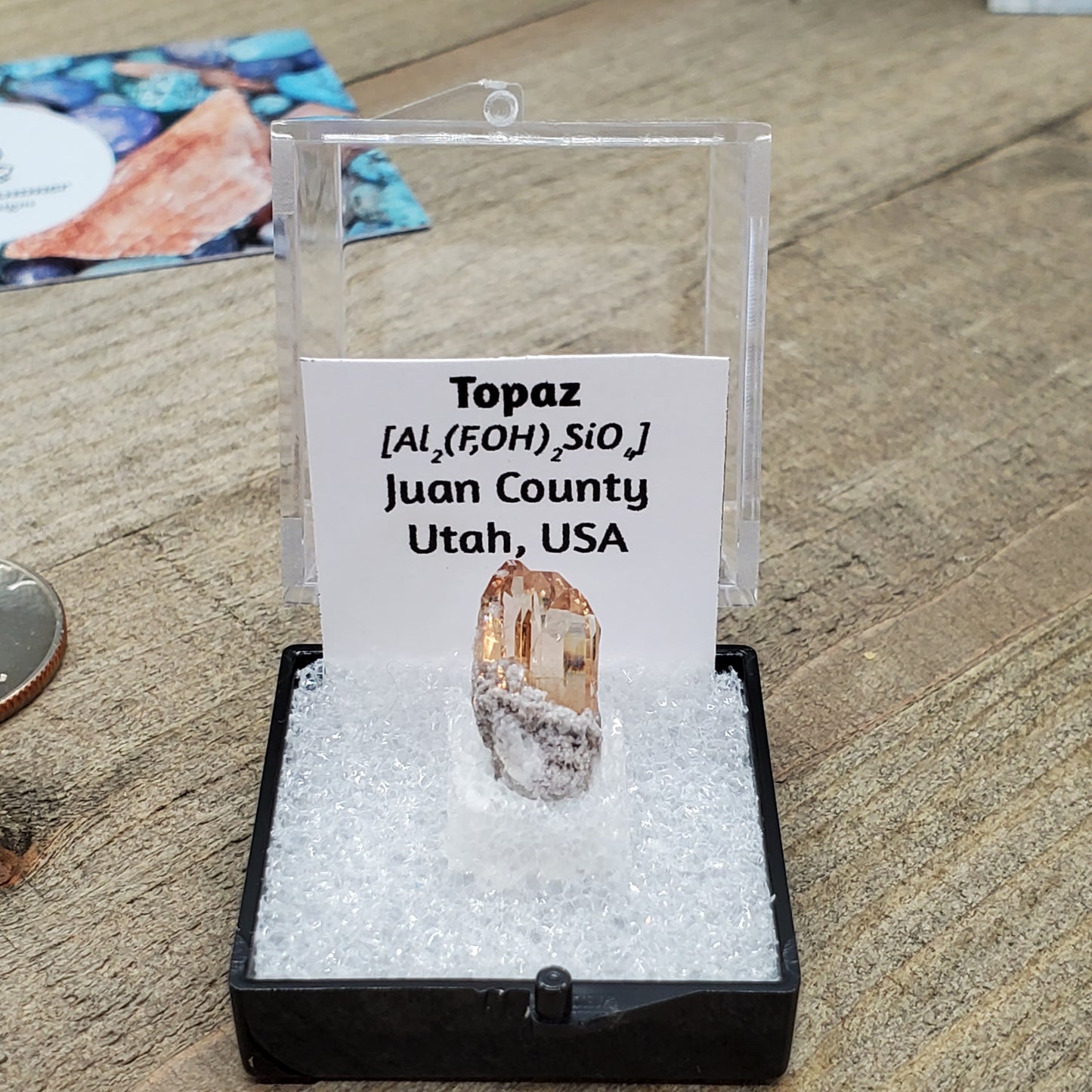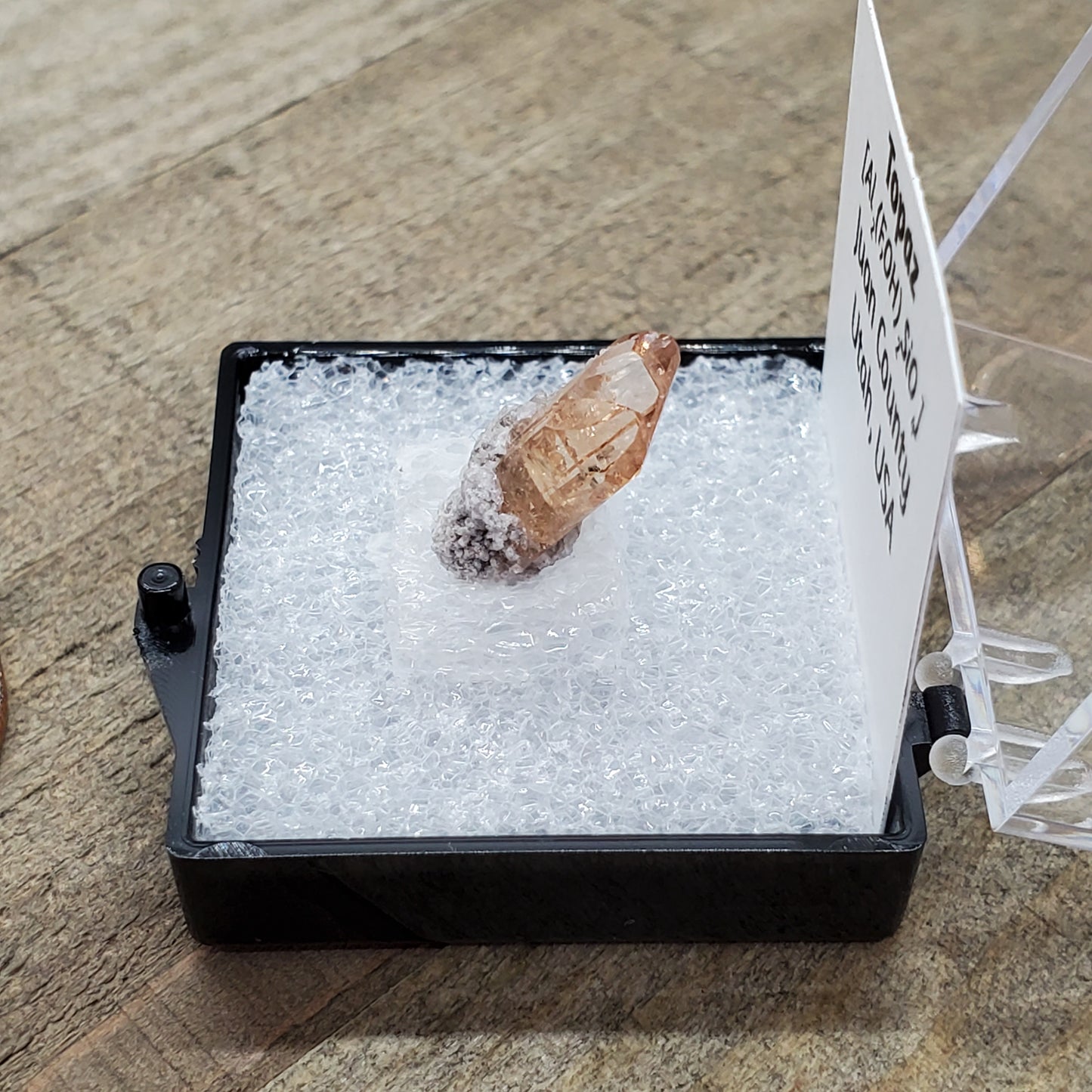Earth & Hammer
Topaz Specimen (Utah, USA)
Topaz Specimen (Utah, USA)
Couldn't load pickup availability
One of November's birthstones, topaz was discovered in the mid-1700s and has since been found around the world. This specimen is a beautiful euhedral topaz crystal on matrix mined in Juan County, Utah, USA.
Mounted in a small display box with a label bearing the mineral name, chemical formula, and origin.
Geologic Information & History
Topaz [Al2(F,OH)2SiO4] is an aluminum orthosilicate (nesosilicate). Orthosilicate minerals are composed of repeating anion units of [SiO4]4- tetrahedron connected by larger cations - in the case of topaz, those are aluminum (Al) and fluorine (F). Topaz typically forms as a very late-stage mineral during the crystallization of silica-rich igneous rocks like rhyolite and granite.
The royal court in Portugal records the discovery of Imperial topaz in 1768, however, it was also known to the ancient greeks who believed that it gave them strength. From the 1300s to 1600s, many people thought topaz held magical properties to aid in longevity, beauty, dispelling anger and more.
Dimensions & Specifications
Specific Gravity: 3.53
Hardness: 8
Material: Topaz
Origin: Utah, USA

Share








